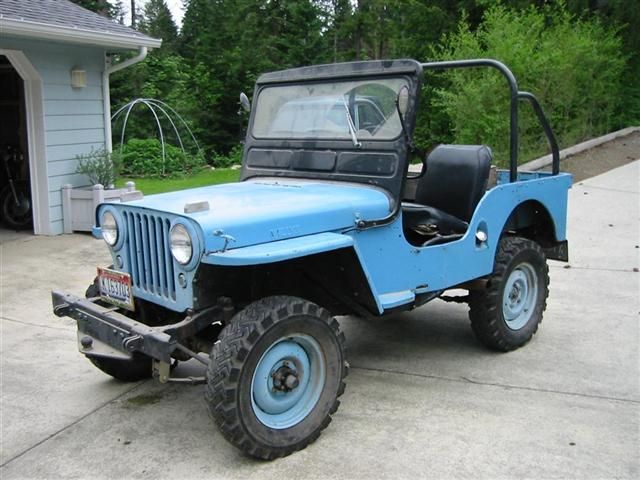------Retro Wheeler rebuild/overhaul------
What follows is the build and evolving story of my latest project. This starts out with a story but evolves into a build...
In the begining my dad had a 1947 Willys CJ-2a. He used to take me out for rides in it, though the only one I can remember is going out to shoot my bb gun. I remember getting dust in my eyes and feeling like I was going to fall out... but I still remember liking the jeep. My mom tells stories of them wedging my car seat in-between them and I'd just be happy as can be for all day jeeping adventures out in the desert and high sierras.
In 1980, we moved to Alaska and the Jeep went into storage in my grandma's garage in southern California. From that point on, I only saw the jeep on Christmas. Each year I'd go out there and play in it, dreaming of someday getting to rebuild it with my dad and of course drive it!!
Well, the years went by... in 1993 we still lived in Alaska, but my grandmother was forced to move out of her home. The jeep was sold to a friend of my dad's for a $1200 I think... for a clean, stock Jeep without a bit of rust. It was so stock it was still 6 volt even. My dad isn't the type to modify much of anything! I'm typically the opposite.
So his friend owned it for a number of years. He had a 225 v6 swapped into it, along with some 2.5" rancho's and a set of larger drums. And it continued to sit. In 2002 I finally got around to catching up to the old Jeep. By that time it had been moved up to northern Idaho, which was somewhat convenient since I was in NW Washington at the time. He was willing to sell it, but for $3k. At the time I had no place to store it, no place to work on it, and I figured at that price it wasn't going anywhere very quickly. Here's a photo from then:
![Image]()
What follows is the build and evolving story of my latest project. This starts out with a story but evolves into a build...
In the begining my dad had a 1947 Willys CJ-2a. He used to take me out for rides in it, though the only one I can remember is going out to shoot my bb gun. I remember getting dust in my eyes and feeling like I was going to fall out... but I still remember liking the jeep. My mom tells stories of them wedging my car seat in-between them and I'd just be happy as can be for all day jeeping adventures out in the desert and high sierras.
In 1980, we moved to Alaska and the Jeep went into storage in my grandma's garage in southern California. From that point on, I only saw the jeep on Christmas. Each year I'd go out there and play in it, dreaming of someday getting to rebuild it with my dad and of course drive it!!
Well, the years went by... in 1993 we still lived in Alaska, but my grandmother was forced to move out of her home. The jeep was sold to a friend of my dad's for a $1200 I think... for a clean, stock Jeep without a bit of rust. It was so stock it was still 6 volt even. My dad isn't the type to modify much of anything! I'm typically the opposite.
So his friend owned it for a number of years. He had a 225 v6 swapped into it, along with some 2.5" rancho's and a set of larger drums. And it continued to sit. In 2002 I finally got around to catching up to the old Jeep. By that time it had been moved up to northern Idaho, which was somewhat convenient since I was in NW Washington at the time. He was willing to sell it, but for $3k. At the time I had no place to store it, no place to work on it, and I figured at that price it wasn't going anywhere very quickly. Here's a photo from then:
















































































